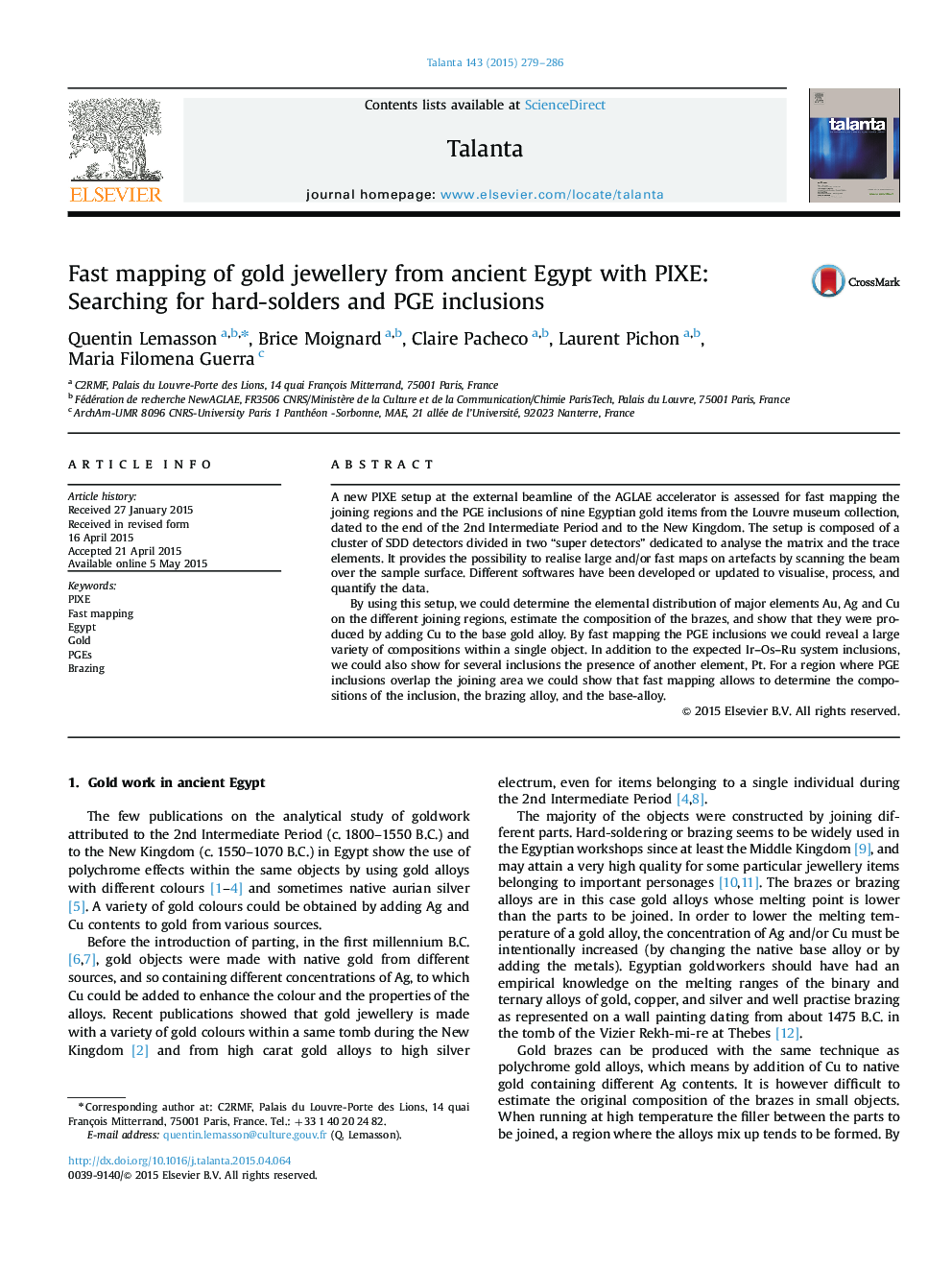| Article ID | Journal | Published Year | Pages | File Type |
|---|---|---|---|---|
| 1241886 | Talanta | 2015 | 8 Pages |
A new PIXE setup at the external beamline of the AGLAE accelerator is assessed for fast mapping the joining regions and the PGE inclusions of nine Egyptian gold items from the Louvre museum collection, dated to the end of the 2nd Intermediate Period and to the New Kingdom. The setup is composed of a cluster of SDD detectors divided in two “super detectors” dedicated to analyse the matrix and the trace elements. It provides the possibility to realise large and/or fast maps on artefacts by scanning the beam over the sample surface. Different softwares have been developed or updated to visualise, process, and quantify the data.By using this setup, we could determine the elemental distribution of major elements Au, Ag and Cu on the different joining regions, estimate the composition of the brazes, and show that they were produced by adding Cu to the base gold alloy. By fast mapping the PGE inclusions we could reveal a large variety of compositions within a single object. In addition to the expected Ir–Os–Ru system inclusions, we could also show for several inclusions the presence of another element, Pt. For a region where PGE inclusions overlap the joining area we could show that fast mapping allows to determine the compositions of the inclusion, the brazing alloy, and the base-alloy.
Graphical abstractFigure optionsDownload full-size imageDownload as PowerPoint slide
